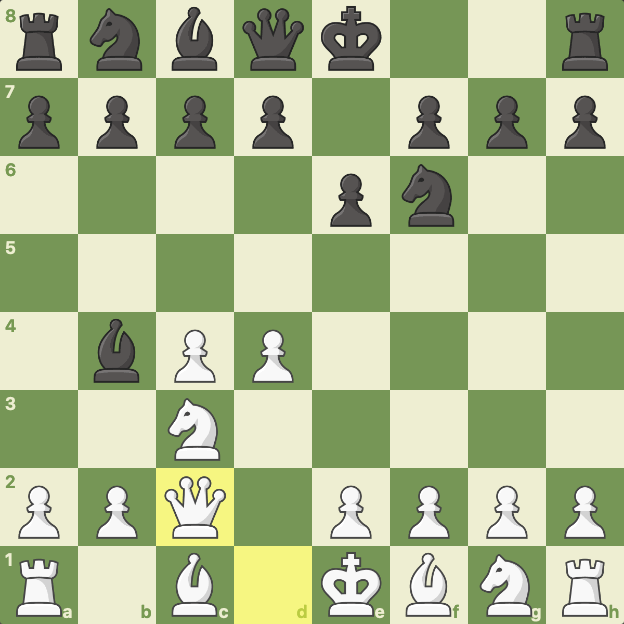
Maroczy Bind
There are many different types of pawn structures and pawn formations in chess—the Maroczy Bind is an example of a pawn formation usually seen in the games of advanced players. Let's learn about the Maroczy Bind!
Here is what you need to know about the Maroczy Bind:
What Is The Maroczy Bind?
As mentioned, the Maroczy Bind (sometimes referred to as simply "the Bind") is a pawn formation. It is named after GM Geza Maroczy, one of the first players awarded the title of grandmaster and a world-class player. He was also the coach of the first women's world champion, Vera Menchik.
Despite popular opinion, Maroczy never actually played the Maroczy Bind himself. He did play against the pawn structure and wrote about it in 1904, but did not play it with White in a serious game.

The Maroczy Bind is identified by white pawns on e4 and c4 and when Black's c-pawn has been traded for White's d-pawn. Here is an example of the Bind against the Sicilian Kan variation after 1.e4 c5 2.Nf3 e6 3.d4 cxd4 4.Nxd4 a6 5.c4:

Why Play The Maroczy Bind?
The Maroczy Bind is a way to play in a more positional fashion in the open Sicilian (and other openings), which can be a big problem for less experienced Sicilian players (and even grandmasters). Unlike most main lines of the Sicilian where players often castle on opposite sides and both are attacking each other's kings, the Bind can lead to a more strategic maneuvering type of position.
This is one of the main reasons to play the Bind: you are taking your opponent out of their comfort zone and avoiding the typical Sicilian slugfest.
The Maroczy Bind is seen in many forms of the Sicilian Defense and is designed to control Black's pawn breaks, in particular the b5 and d5 breaks. Restricting the pawn breaks cuts down on Black's potential sources of counterplay, creating a "bind." Here is the Maroczy Bind versus the Accelerated Dragon after 1.e4 c5 2.Nf3 Nc6 3.d4 cxd4 4.Nxd4 g6 5.c4:

In the open lines of the Sicilian (where White trades their d-pawn for Black's c-pawn), the b5 and d5 breaks are the two most common pawn breaks that Black wants. White normally has a space advantage in Maroczy Bind positions, and if Black isn't careful, they can find themself in a passive position. Luckily for Sicilian players, resources and ideas have been developed to deal with the Bind.
IM Jeremy Silman expands on Black's ideas in the Accelerated Dragon variation of the Sicilian Defense versus the Maroczy Bind in this article, while GM Magesh Panchanathan covers ideas for White in the same line in this article.
Maroczy Bind Openings
The Maroczy Bind can be reached through more than a few transpositions. As mentioned, it is mainly used against many variations of the Sicilian, including the Accelerated Dragon, Taimanov, Kan, Moscow, Chekhover, and Kalashnikov. However, it can also be seen in lines of the English Opening (specifically the Hedgehog lines) as well as the Nimzo-Indian Defense and Queen's Indian Defense.
One example of a transposition from a 1.d4 opening to the Bind can be found in the Nimzo-Indian Defense. After 1.d4 Nf6 2.c4 e6 3.Nc3 Bb4 4. Qc2, we reach the starting point for the Nimzo-Indian Classical Variation:

How could this turn into a Maroczy Bind pawn structure, you ask? Well, after 4...c5 5.dxc5 0-0 6.e4 Nc6 7. Nf3 Bxc5, we arrive at the following position:

As you can see, White has pawns on e4 and d4, and Black's c-pawn has been exchanged for White's d-pawn—a Maroczy Bind position is reached.
Conclusion
You now know what the Maroczy Bind is and are aware of many openings where it is used. Check out GM Aman Hambleton's video on the Maroczy Bind for more information, or go through some lines in Chess.com's Opening Explorer!







